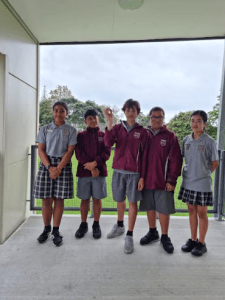LI: To design and make a paper plane that will fly the furthest.

Our team challenge was to design an airplane to fly the furthest in the distance. We analysed our data of the paper air planes we flew. The planes we designed were tie fighter, deltry, the bird, and lastly the dart. Our group designed multiple planes to verify which of the planes flew the best. The plane that went the furthest was the dart. I personally think the dart flew the furthest because of the shape and the point. Lastly we versed group by group and measured the flight distance accurately.
I found this task interesting because sometimes the dart wouldn’t go further than we thought, as the cause might be how we throw it.
Something we could improve on with our plane is having more weight on the plane, because it was pretty light.
